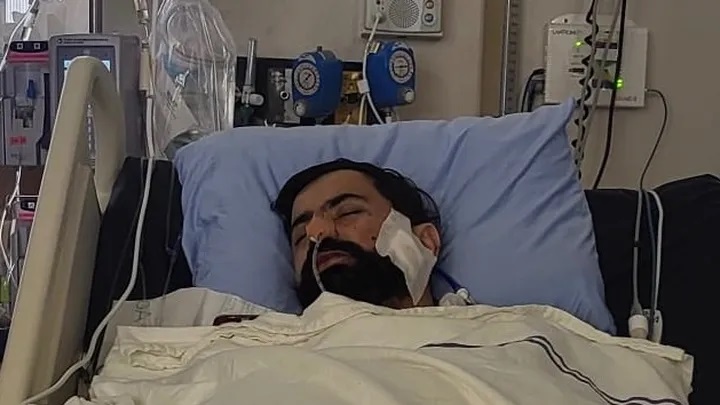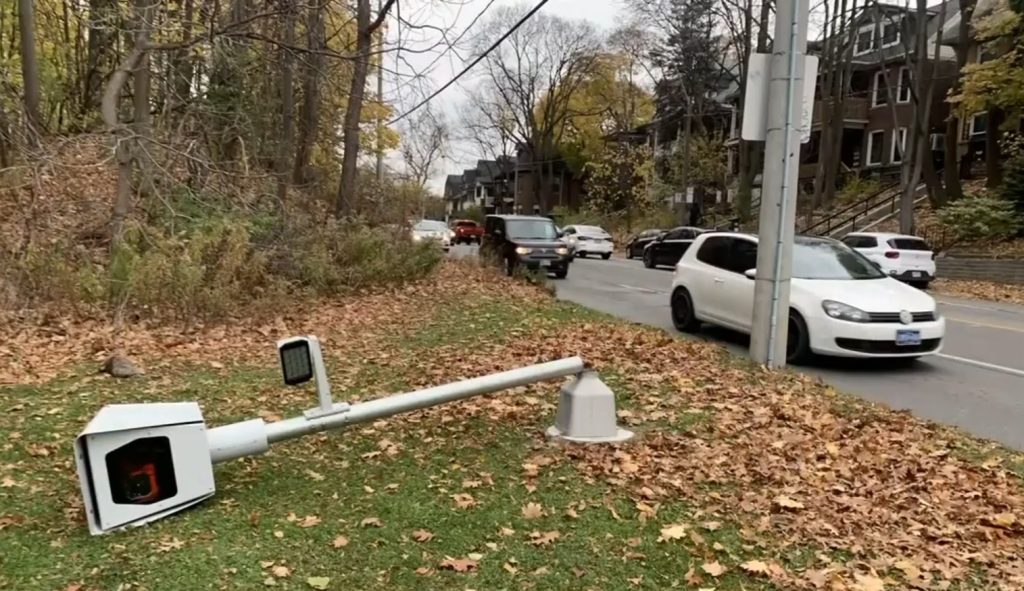Activists say Syrian regime forces kill scores in latest massacre
Posted July 13, 2012 12:31 pm.
This article is more than 5 years old.
BEIRUT – Anti-regime activists in Syria said Friday that government gunners rained shells on a poor, farming village before armed thugs moved in, leaving scores of people dead in what rebels claim is one of the worst single days of bloodshed in the uprising against President Bashar Assad’s regime.
The accounts of the killings varied, as did estimates of the number of dead. Late Friday, local activists backed away from previous declarations that more than 200 people were killed. One said he had confirmed 74, but had only 20 names. Another provided a list of 103 names.
One amateur video posted online Friday showed a mass grave that was three bodies wide and about 10 bodies long. The video’s narrator called it “the first group of martyrs from the Tremseh massacre.”
Activist claims and videos could be independently verified, but the killings in Tremseh appear to be the latest in a string of offensives by Syrian forces attempting to crush the uprising against Assad.
The Obama Administration blamed the Syrian regime for the violence and said the killings should boost international backing for efforts to push him from power.
“It certainly does build strong international support to continue to ramp up the pressure on Assad,” said Deputy Press Secretary Josh Earnest from aboard Air Force One on the way to Obama campaign events in Virginia.
The head of the U.N. monitoring mission in Syria also singled out government forces for blame, saying they attacked from the air and land in “continuous violence.”
Yet much remains unclear about what happened in Tremseh, such as why Assad’s troops moved against the village and whether all of the dead were civilians. One group said dozens of the dead were rebel fighters.
Few videos were shot during the violence on Thursday. One showed a young man wailing over the body of an elderly man wrapped in a blanket and lying in the street.
“Come on, Dad. For the sake of God, get up,” the man sobs. A boom is heard in the background.
Another video showed a tank in the street while large explosions and gunfire are heard.
The new violence is certain to raise questions about whether the international community’s diplomatic efforts to end the crisis remain relevant. Kofi Annan, the international envoy whose peace plan for Syria has been largely ignored by all sides, said he was “shocked and appalled” by the reports of the attack.
He singled out the government for using heavy weaponry in populated areas, something it was supposed to stop doing three months ago.
Maj. Gen. Robert Mood, head of U.N. monitoring mission, told reporters in Damascus that a group of observers about five kilometres (three miles) away during the violence confirmed the use of heavy weapons and attack helicopters.
He said his team would investigate if a cease-fire were reached.
The nearly 300 observers in Syria have largely stopped moving around because of continued violence. Government forces have also barred them from the sites of past massacres.
In Istanbul, the head of the Syrian National Council, an exile opposition group, called on the Security Council to meet urgently to discuss ways to protect the Syrian people. He also said the killings raised doubts about Annan’s plan.
“Kofi Annan is very much away from the mission that he was entrusted with, which will make us reconsider everything he proposes,” Abdelbaset Sieda told reporters.
Syria has grown increasingly chaotic in recent months as the protests calling for political change that began in March 2011 have been overshadowed by scores of rebel groups waging an armed insurgency against the government.
Rebel groups operate independently, and a string of large suicide bombings has raised suspicions that al-Qaida fighters are operating in Syria.
Activists often blame attacks on shabiha, or pro-government thugs who do not directly answer to any military structure — allowing the government to deny responsibility for their actions.
The killings in Tremseh, about 15 kilometres (nine miles) northwest of the central city of Hama, reflect the difficulty of getting reliable information on events inside Syria, a country of 22 million people that is about the size of North Dakota.
Independent investigation is nearly impossible, as Syria has one of the most authoritarian governments in the Middle East and bars most journalists from working.
Still, a picture of violence in Tremseh began to emerge Friday.
One amateur video showed at least 31 bodies wrapped in sheets and blankets and laid out shoulder to shoulder on the floor of a mosque. Some of the bodies are no more than charred remains.
Other videos show at least that many bodies in a mass grave.
For its part, the Syrian government said more than 50 people were killed when Syrian forces clashed with “armed gangs” that were terrorizing village residents. The regime has referred to those seeking its overthrow as terrorists throughout the 16-month uprising.
Two activists reached Friday via Skype who said they were in villages near Tremseh gave different accounts.
Bassel Darwish said the army surrounded the village early Thursday to prevent people from fleeing and pounded it until early afternoon with artillery and tank shells and missiles from a combat helicopter.
“We saw the events,” he said, adding that he was a few kilometres from the village. “Lots of people tried to get the families out but they weren’t able to.”
After the shelling, the army entered with pro-government thugs, who gunned down and stabbed residents in the streets, he said.
Early Friday, Darwish said activists had compiled the names of about 200 dead, but he did not share the list. Later, via Skype, he sent a list of 103 names of people he said were confirmed dead.
“We are still trying to collect and confirm the rest of the names, but most of them are missing and we don’t know what happened to them,” he wrote.
Another activist, Abu Ghazi al-Hamwi, said local rebels, often called the Free Syrian Army, tried to fight off the army but couldn’t.
“They kept shelling the city and the weapons that the Free Army had were not enough to keep them out,” he said.
He, too, backed away from claims of more than 200 dead, saying late Friday he had been able to confirm 74.
The Britain-based Syrian Observatory for Human Rights said Friday that more than 150 people were killed in Tremseh and that more than 100 of their names had been compiled. It said dozens of the dead were rebel fighters and that the bodies of about 30 were totally burned. Others were stabbed or gunned down as they fled.
Both Darwish and al-Hamwi suspected that sectarianism motivated the attack. Tremseh is a Sunni Muslim village in an area also home to communities of other sects, including Christians and Alawites, the sect of Assad and many in the army and security forces.
Syria’s Sunni majority is the driving force in the anti-Assad uprising, while most Alawites have stood by the regime.
Both activists said that pro-regime thugs from the nearby Alawite village of Safsafiya entered the village with the army.
Thursday’s killing recalled a massacre in late May in the area of Houla, about 35 kilometres (22 miles) south of Tremseh, where more than 100 people were killed. Activists then also blamed the army and Alawite thugs, while the regime blamed “terrorists” seeking to frame the government.
A U.N. investigation said forces loyal to the government “may have been responsible” for many of the deaths.
The Syrian government gave a very different story of the Tremseh killings, with the state news agency saying that “armed terrorist groups” had raided the village and were randomly firing on residents.
Security forces clashed with the armed men, killing and capturing many of them, the report said. It said three soldiers and some 50 residents were killed.
The agency provided no photos or videos. Assad’s regime considers the country’s uprising to be the work of terrorists and extremists, not people seeking reform.
Activists say more than 17,000 people have been killed in the revolt, most of them civilians. The government says more than 4,000 members of the security forces have been killed. It does not provide numbers of civilian dead.








